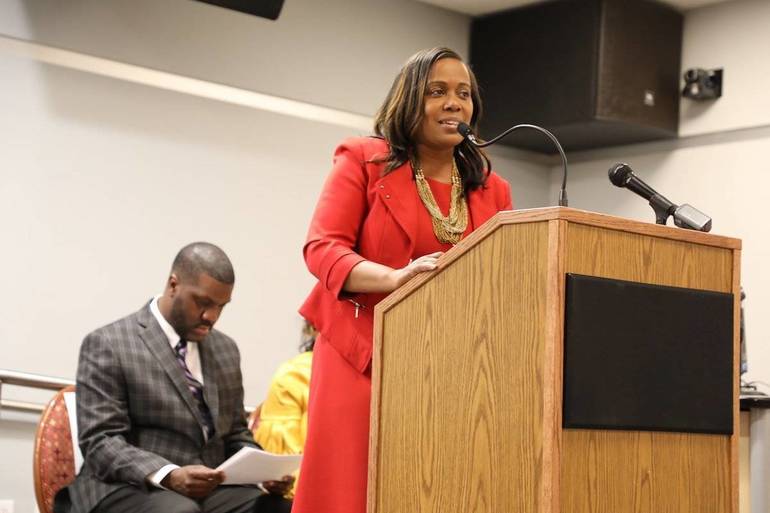That’s a disaster. This school district is now run by the state of New Jersey, what are we doing about this? … We’re failing miserably here.
That’s Vice President Andy Mulvihill at yesterday’s State Board of Education meeting responding to a presentation from Camden City Schools superintendent Katrina McCombs. McCombs, who reports regularly to the Board as leader of a district under state takeover, informed members of the multiple problems faced by Camden students in traditional schools. (Of the 15,000 students in Camden who attend public schools, 3,850 attend hybrid charter/district “renaissance schools,” 4,350 attend public charter schools, and 6,800 attend schools in the traditional district.)
So what does Mulvihill find so miserable? Start with this: While (according to Politico) “[s]ince state intervention, students have been slowly but steadily improving their test scores,” 80% of Camden traditional school students still are not meeting state expectations in reading and 85% are not reaching state expectations in math. McCombs: “It would be very disingenuous to say that all of our efforts are producing the outcomes we want.” (Mulvihill suggested that more charter schools might help student outcomes, which “elicited an eyebrow raise from McCombs.”)
Here are other issues discussed during the Board meeting:
- Student attendance during remote instruction is down to 75%, compared to a typical Camden rate of 90%. Again from Politico, “The lowest attendance rates have been among the oldest and youngest learners — kindergartners, first graders, second graders and ninth graders and were among those most often to be absent.” (Worth noting: Other districts, especially urban ones with disproportionate rates of low-income students are not doing much better.)
- School buildings are in desperate need of renovation (although the new $133 million Camden High School will be ready this June).
- Two-thirds of staff in the traditional district have requested and been granted waivers to not teach in school buildings, rendering it unlikely for in-school instruction to begin any time soon.
- Student enrollment is dropping, down by almost half since the state takeover in 2013, and McCombs will have to close schools.
And, finally, the digital divide remains problematic. Four percent of Camden district students don’t have a laptop and/or internet because, as the Star-Ledger notes, “in some cases, families have refused the district’s offer of a school laptop to use at home because cash-strapped parents refuse to sign documents promising to pay for the equipment if it is damaged or is not returned.”
McCombs said, “It breaks our hearts that we have to even have that in place because we have to account for every device.” (Across the state, the digital divide has dropped from 231,000 students without the technology to access online instruction to, at last report, 33,851 students.)
McCombs emphasized that her team was making efforts to find students (phone calls, knocking on doors) to improve attendance rates. Acting Education Commissioner Angelica Allen-McMillan called the drop in attendance “concerning” and will schedule a call with Camden officials to “brainstorm ways to get more students in their virtual classes.”



